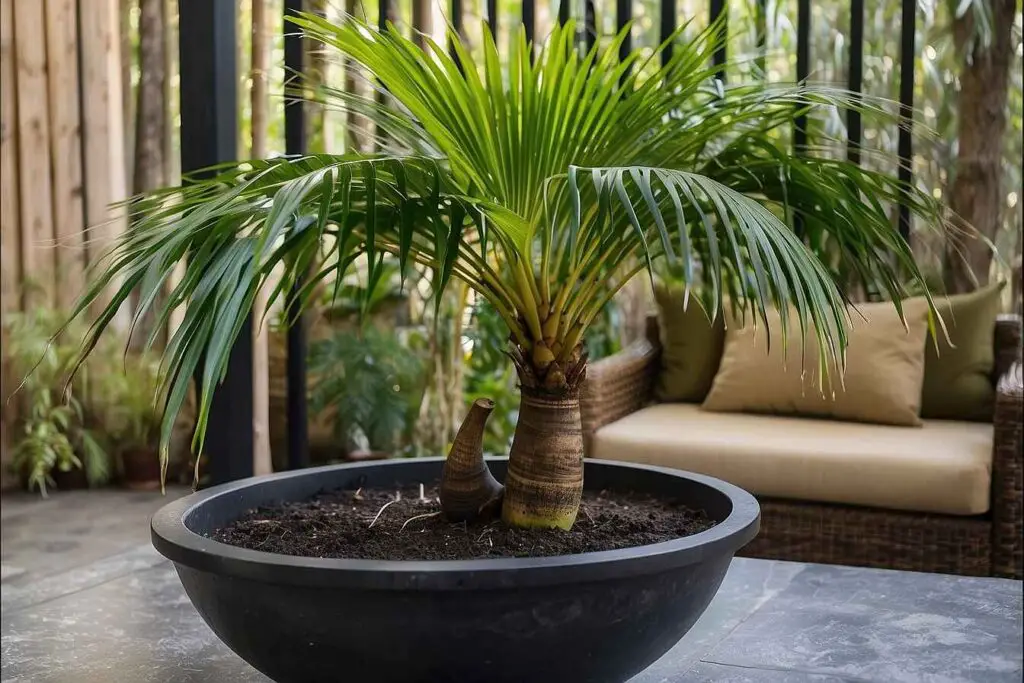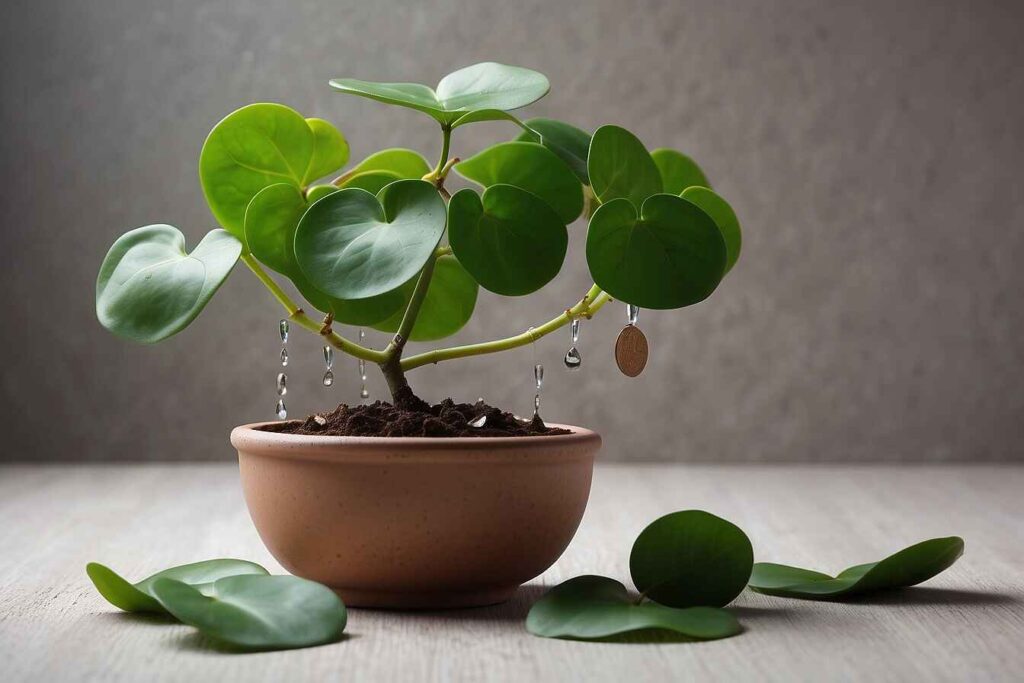Aloe plants are popular because they are tough and have many benefits. The gel from aloe is often used to treat burns and skin problems. Aloe plants also make nice, easy-care additions to homes. But even tough plants can have problems. Many people want to know how to save an aloe plant.
Understanding how to care for an Aloe plant starts by recognizing signs of trouble. Common issues include overwatering, underwatering, poor lighting, bad soil, and pests. These problems can cause yellow leaves, soft stems, and slow growth. Spotting these symptoms early lets you take action to save your plant.
When it comes to caring for an Aloe plant, it’s important to identify the problem. Overwatering is a common issue. It can cause root rot, which can be very harmful if not treated quickly. Underwatering can also make the plant dehydrated and weak. Aloe plants need the right amount of sunlight to grow well. Too much or too little light can stress the plant.
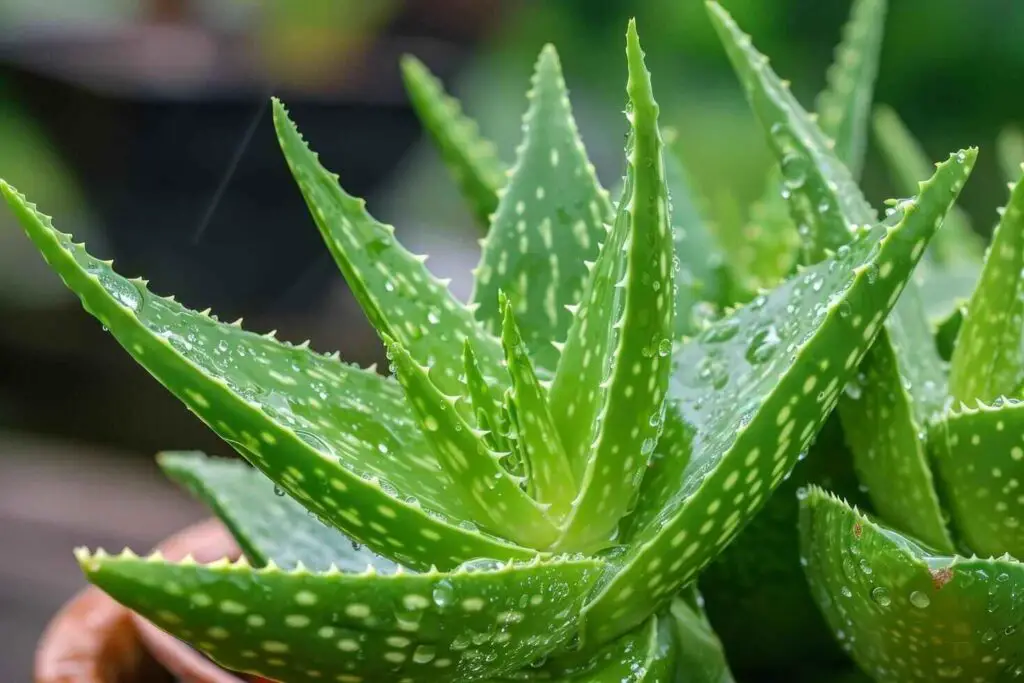
To help an Aloe plant thrive, you need to know about its soil needs. Aloe plants do best in soil that drains well. This prevents water from gathering around the roots. Poor soil can cause nutrient problems and make the plant unhealthy.
Identifying the Problem
Recognizing signs that your Aloe plant is in trouble is the first step to saving it. Leaves turning yellow, soft stems, and slow growth mean your plant is struggling. To know how to save your Aloe, you must figure out the cause – whether it’s getting too much or too little water.
Yellowed leaves can mean you’re overwatering your Aloe plant. Too much water makes the roots waterlogged. This causes root rot. Mushy stems also show overwatering and root rot. To save an Aloe plant, check the roots for decay. Slow growth and dry, shriveled leaves usually mean underwatering.
Diagnosing Common Issues
Overwatering
When diagnosing Aloe plant issues, overwatering is a common cause. Signs of overwatering include yellow leaves and soft stems. The most serious issue is root rot, which smells bad and has blackened roots. To fix overwatering, you must act quickly to stop more damage.
Underwatering
On the other hand, if you don’t water your Aloe plant enough, it can become dehydrated. The leaves will look dry and wrinkled. To save an Aloe plant from underwatering, look for leaves that are getting thin and brittle. Make sure your plant gets enough water regularly to help it recover.
Improper Lighting
Aloe plants need enough sunlight to grow well. Too little or too much light can cause issues. Pale, stretched leaves mean not enough light. Brown, scorched leaves mean too much light. To save an Aloe plant, adjust its light exposure to the right amount of sunlight.
Poor Soil Quality
The soil quality is very important for keeping your Aloe plant healthy. Aloe plants need soil that drains well. This prevents water from staying around the roots. Poor soil can cause problems like not enough nutrients or soil that is too packed down. This can make your Aloe plant unhealthy. To improve the soil, you should repot your Aloe in a mix made for succulents.
Pests and Diseases
Common bugs like mealybugs and aphids can hurt Aloe plants. Fungal illnesses and other diseases can also make your Aloe plant sick. To save your Aloe plant, you need to identify and treat these bugs and diseases right away. Check your plant often. Use natural or chemical treatments to keep it healthy.
Reviving an Overwatered Aloe Plant
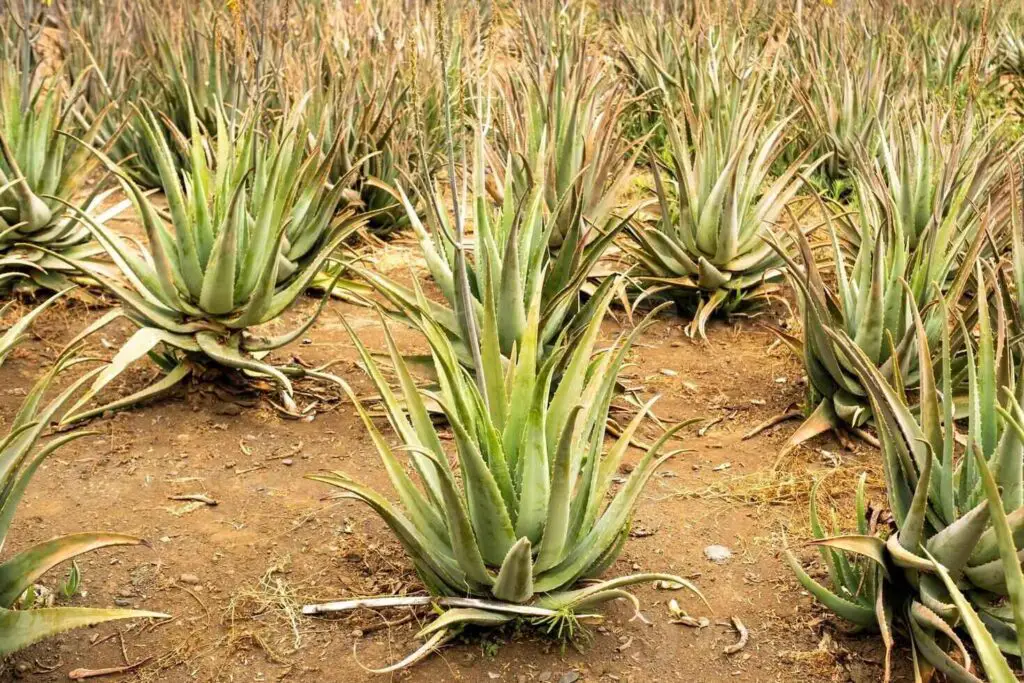
Reviving an overwatered Aloe plant is key to saving it. Too much water is a common problem. But if you take the right steps, your plant can get better.
Immediate Steps to Take
When you see your Aloe plant has too much water, take action right away. Take the plant out of the pot to check the roots. Lift the plant out carefully to avoid harming any healthy roots.
Next, check the plant’s roots closely. Healthy roots are white or light tan and firm. Look for any roots that are black, mushy, or have a bad smell. This means the roots are rotting. To save the Aloe plant, use clean, sterilized scissors or pruners to trim away the damaged roots. Make sure to remove all the affected parts. This will stop the rot from spreading.
Improving Drainage
Once you’ve treated the roots, improving drainage is key. Choose a pot with enough drainage holes so excess water can get out. This is essential for saving an Aloe plant. Proper drainage stops water from collecting at the bottom of the pot, which can cause more root rot.
Use a soil mix made for succulents and cacti. These mixes drain well and have the right nutrients for your Aloe plant. If you make your own soil, mix potting soil with sand or perlite. This will improve drainage.
Proper Watering Techniques
Establishing a proper watering plan is important to prevent overwatering issues. When caring for an Aloe plant, it’s key to let the soil dry out fully between waterings. Check the soil by putting your finger in about an inch. If the soil feels dry, it’s time to water the plant.
Water your Aloe plant fully. Let the extra water drain out. Toss any water in the pot’s saucer. Don’t let the plant sit in water. This can cause root rot. In winter, Aloe plants need less water. Change your watering schedule.
Reviving an Underwatered Aloe Plant
Reviving an underwatered Aloe plant is important. Aloe plants need some water to grow well. If your Aloe plant looks dry and shriveled, it needs more water. You need to take steps to help it.
Rehydration Techniques
When learning how to help an Aloe plant that isn’t getting enough water, the key is to slowly give it more water. First, give your Aloe a deep, thorough watering. Don’t just add a little water on the surface. Instead, water the plant until extra water starts draining out the bottom of the pot. This makes sure the roots get enough moisture.
Using the soak-and-dry way works well for Aloe plants. First, water the plant deeply. Then, let the soil dry out fully before watering again. This matches how Aloe plants get water in their natural homes. It helps avoid both too much and too little watering.
Ensuring Consistent Moisture
Keeping the Aloe plant moist is key. Establish a watering routine that fits your specific plant and where it grows. Most Aloe plants need water every 2-3 weeks. But this can change based on the plant size, pot, and climate.
To check the plant’s recovery, look at the Aloe’s leaves and overall look. Healthy Aloe leaves are firm and plump, showing the plant is well-watered. If the leaves look healthy again, it means your watering plan is working.
During the spring and summer, your Aloe plant may need more frequent watering. In the fall and winter, you can water it less often. Always let the soil dry completely before watering again. This helps prevent overwatering.
By using these rehydration methods and keeping the plant moist, you can learn to save an Aloe plant that didn’t get enough water. With good care, your Aloe plant can recover and keep growing well.
Adjusting Lighting Conditions
Understanding lighting is important for caring for Aloe plants. Aloe plants do best in bright light. Giving them the right amount of sun is key to keeping them healthy and helping them grow.
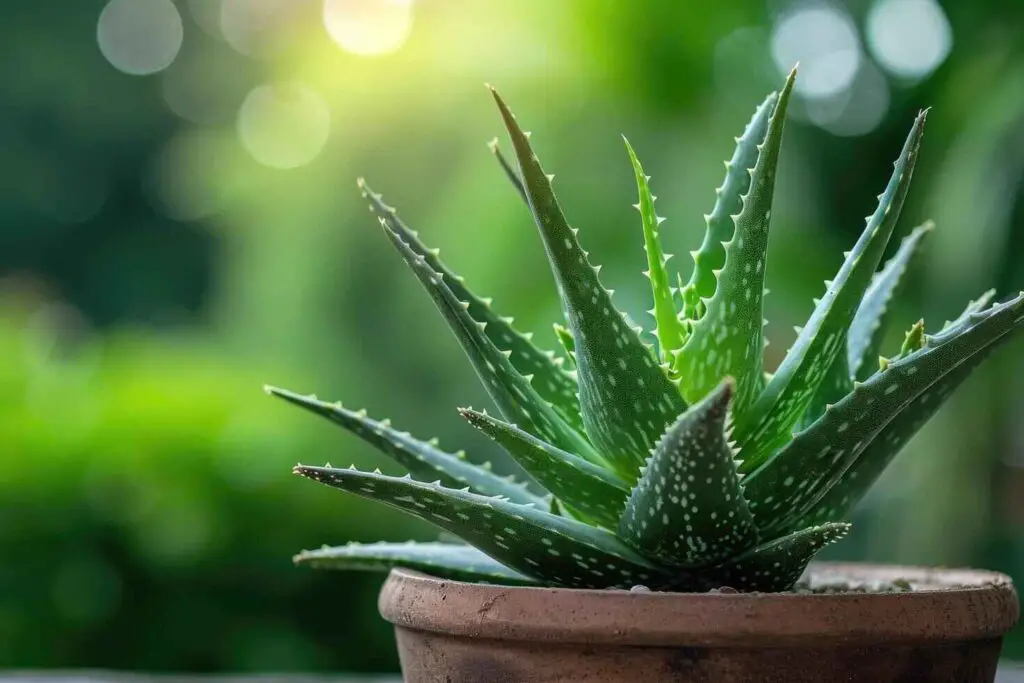
Optimal Sunlight Requirements
To ensure your Aloe plant gets enough sunlight, place it in the right spot. Aloe plants do best in bright, indirect light. A south or west-facing window is best. These spots get lots of light during the day without direct sun. Direct sun can cause sunburn on the plant.
Maintaining an Aloe plant requires adjusting its light. In summer, move the plant away from direct sunlight. In winter, place it closer to the window for more light during shorter days.
Using Artificial Lighting
If natural light is not enough, using artificial lighting can help. This is useful in areas with long winters or homes without good windows. Grow lights can give Aloe plants the light they need to grow well.
When using grow lights, it’s important to set them up correctly. Place the light around 6-12 inches above the Aloe plant. This depends on the light’s strength. A timer can help the plant get about 12-14 hours of light each day. This mimics natural daylight patterns.
The benefits of grow lights are they give consistent light exposure. This is useful for keeping plants healthy all year. When setting up grow lights, make sure to use full-spectrum lights. These copy natural sunlight best.
Improving Soil Quality
Improving soil helps save Aloe plants. Aloe plants need well-draining soil. This stops water from gathering around the roots. Stagnant water can cause root rot and other problems.
Choosing the Right Soil Mix
The importance of well-draining soil is key for saving an Aloe plant. Aloe plants grow naturally in dry places with sandy, loose soil that lets water drain fast. To get this at home, you need the right soil mix.
A recommended soil mix for Aloe plants includes cactus potting mix and perlite or sand. This mix provides good drainage and the right nutrients. You can also use a potting mix made for succulents, which meets the needs of plants like Aloe.
Repotting Techniques
Repotting your Aloe plant can help it grow better. You need to repot it every 2-3 years or when you see roots coming out of the pot. This improves the soil and gives the plant more space. Knowing how and when to repot your Aloe plant is key to keeping it healthy.
To repot your Aloe plant, follow these steps:
- Prepare the New Pot and Soil: Choose a pot that is a bit bigger than the one you have now. Make sure it has holes so water can drain out. Fill it partly with the soil mix that drains well.
- Take out the Aloe plant. Gently take the Aloe plant from its pot. If the plant won’t come out, tap the pot’s sides to loosen the soil.
- Check the plant’s roots for any issues like rot or disease. If you find damaged roots, trim them using clean scissors.
- Place the plant in the middle of the new pot. Fill the space around the plant’s roots with soil. Push down lightly to remove air pockets.
Care and Maintenance
To keep your Aloe plant healthy, you need to have a regular care routine and take preventive steps. Knowing how to save an Aloe plant means more than just fixing problems. It also includes maintaining the plant’s overall well-being through regular care and attention.
Establishing a Care Routine
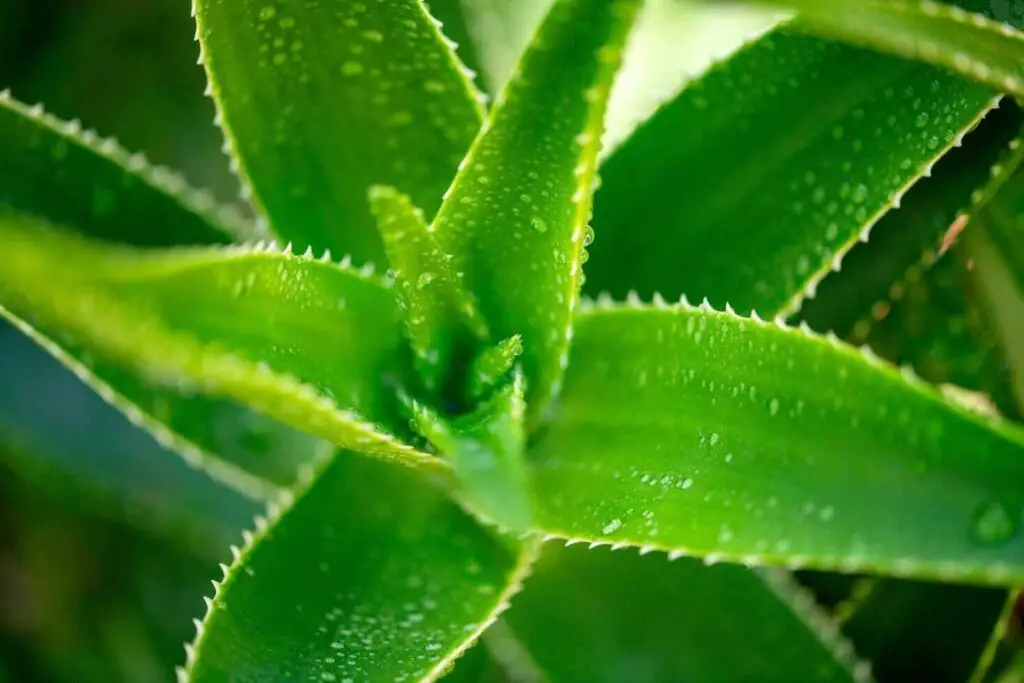
A structured care routine is key for the long-term health of your Aloe plant. This includes watering regularly, feeding, and monitoring the plant.
Aloe plants like to be watered fully. Then let the soil dry out completely before watering again. This stops root rot. It makes sure the plant gets the moisture it needs without too much water.
Aloe plants don’t need much fertilizer. Fertilize them lightly once in spring and once in summer. Use a balanced, water-soluble fertilizer at half strength. Too much fertilizer can harm the plant by causing salt build-up in the soil.
Regularly check your Aloe plant. Look for signs of trouble, like pests or diseases. Catching problems early is key. This stops small issues from becoming big problems.
Seasonal Care Tips
During the growing season, your Aloe plant needs more watering and maybe more light. This is also the best time to repot if needed and grow new plants from offshoots.
Fall and winter are quiet times for aloe plants. In colder months, they need less water. Make sure they still get enough light. Water them less often to prevent overwatering.
Preventive Measures
- Use soil that drains well. Pots should have holes to avoid water building up around the roots. This helps keep the plant healthy.
- Aloe plants need the right amount of light. Move the plant’s location to give it the best light throughout the year.
- Avoid overcrowding the plant. Give the plant enough space for air to move around it. This helps prevent fungus and pests from infecting the plant.
- Cleanliness is important for your plant’s health. Keep the area around it clean. Remove any fallen leaves or debris that could attract pests or diseases. Regularly wipe the leaves to remove dust. This helps you spot any early signs of problems.
Tips for Keeping Your Aloe Plant Healthy and Thriving
- Rotate your Aloe plant regularly. This ensures all sides get the same amount of light. It also stops the plant from leaning to one side.
- Aloe plants do best in warm, dry areas. Keep the temperature between 55°F and 80°F. Avoid putting the plant in drafty or very humid places.
- Avoiding Stress: Try to avoid big changes in the plant’s surroundings. If you need to move the Aloe plant, slowly get it used to the new conditions.
To further enhance your understanding of common cucumber plant problems, don’t miss our comprehensive article on cucumber plant leaves turning Yellow.
